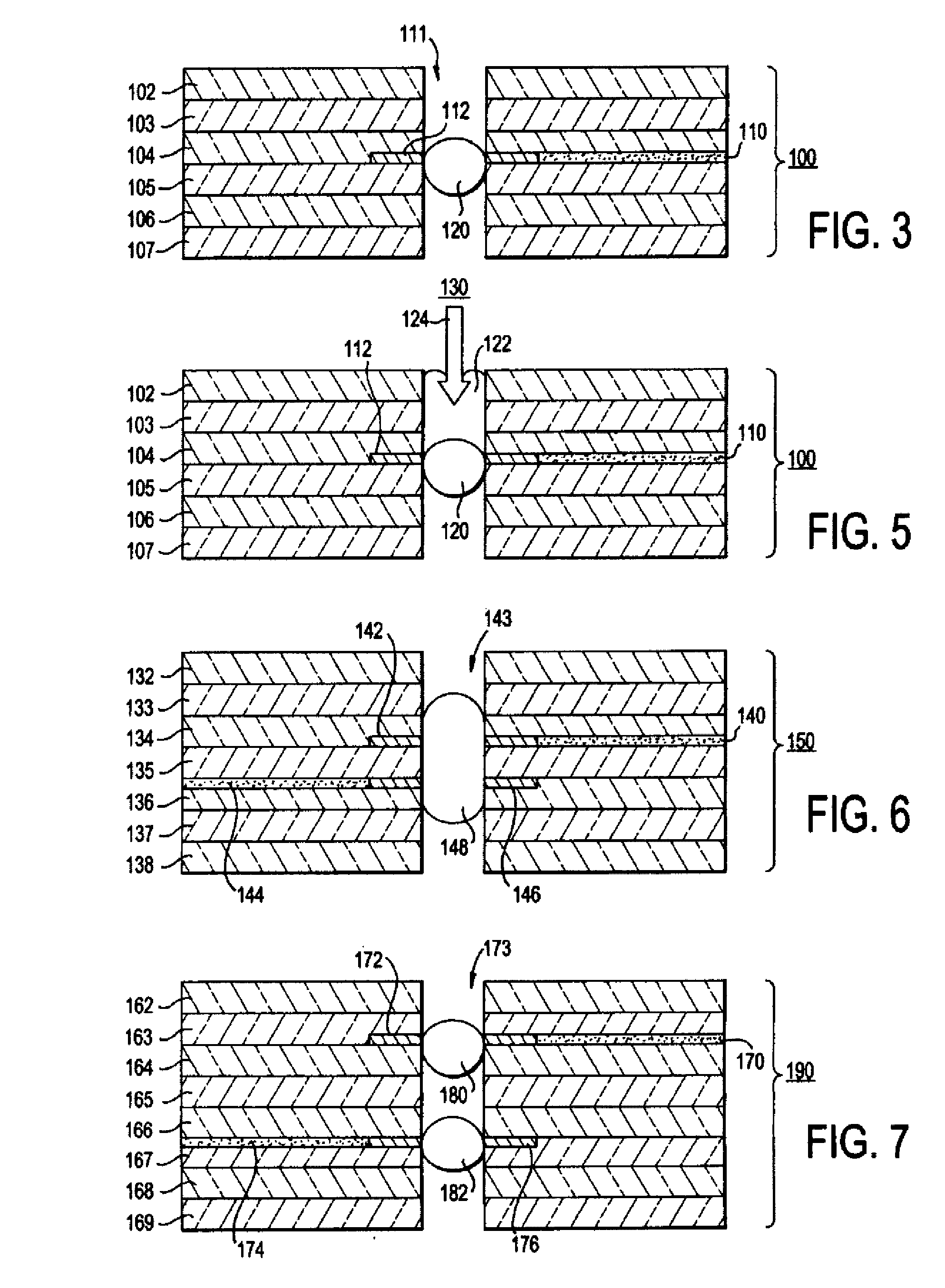Printed circuit board minimizing undesirable signal reflections in a via and methods therefor
a technology of printed circuit boards and vias, which is applied in the direction of printed element electric connection formation, printed circuit non-printed electric components association, electrical apparatus construction details, etc., can solve the problems of increasing the manufacturing complexity of multi-layer pcbs, affecting the signal quality of printed circuit boards, and adding undesirable cost and complexity. , to achieve the effect of increasing the density of the circuit board
- Summary
- Abstract
- Description
- Claims
- Application Information
AI Technical Summary
Benefits of technology
Problems solved by technology
Method used
Image
Examples
Embodiment Construction
[0031]FIG. 3 is a partial cross-sectional view of a multi-layer printed circuit board 100 in accordance with the present invention. The multi-layer PCB 100 includes dielectric layers 102-107, with at least one of the dielectric layers having a conductive trace 110 formed on a surface in a conventional manner, such as by photolithography. The conductive trace 110 is adapted for carrying a high speed signal and has a conductive pad 112 connected thereto for facilitating electrical connection to the conductive trace 110.
[0032]A non-conductive via 111 in the form of a non-plated hole extends through at least a portion of the dielectric layers 102-107 to intersect at least one conductive trace on an inner layer of the PCB 100. In the illustrative embodiment of FIG. 3, the non-conductive via 111 extends through the entire PCB 100 and intersects the conductive pad 112 of the conductive trace 110, thereby exposing a portion of the pad 112 along the walls of the non-conductive via 111.
[0033]...
PUM
 Login to View More
Login to View More Abstract
Description
Claims
Application Information
 Login to View More
Login to View More - R&D
- Intellectual Property
- Life Sciences
- Materials
- Tech Scout
- Unparalleled Data Quality
- Higher Quality Content
- 60% Fewer Hallucinations
Browse by: Latest US Patents, China's latest patents, Technical Efficacy Thesaurus, Application Domain, Technology Topic, Popular Technical Reports.
© 2025 PatSnap. All rights reserved.Legal|Privacy policy|Modern Slavery Act Transparency Statement|Sitemap|About US| Contact US: help@patsnap.com



